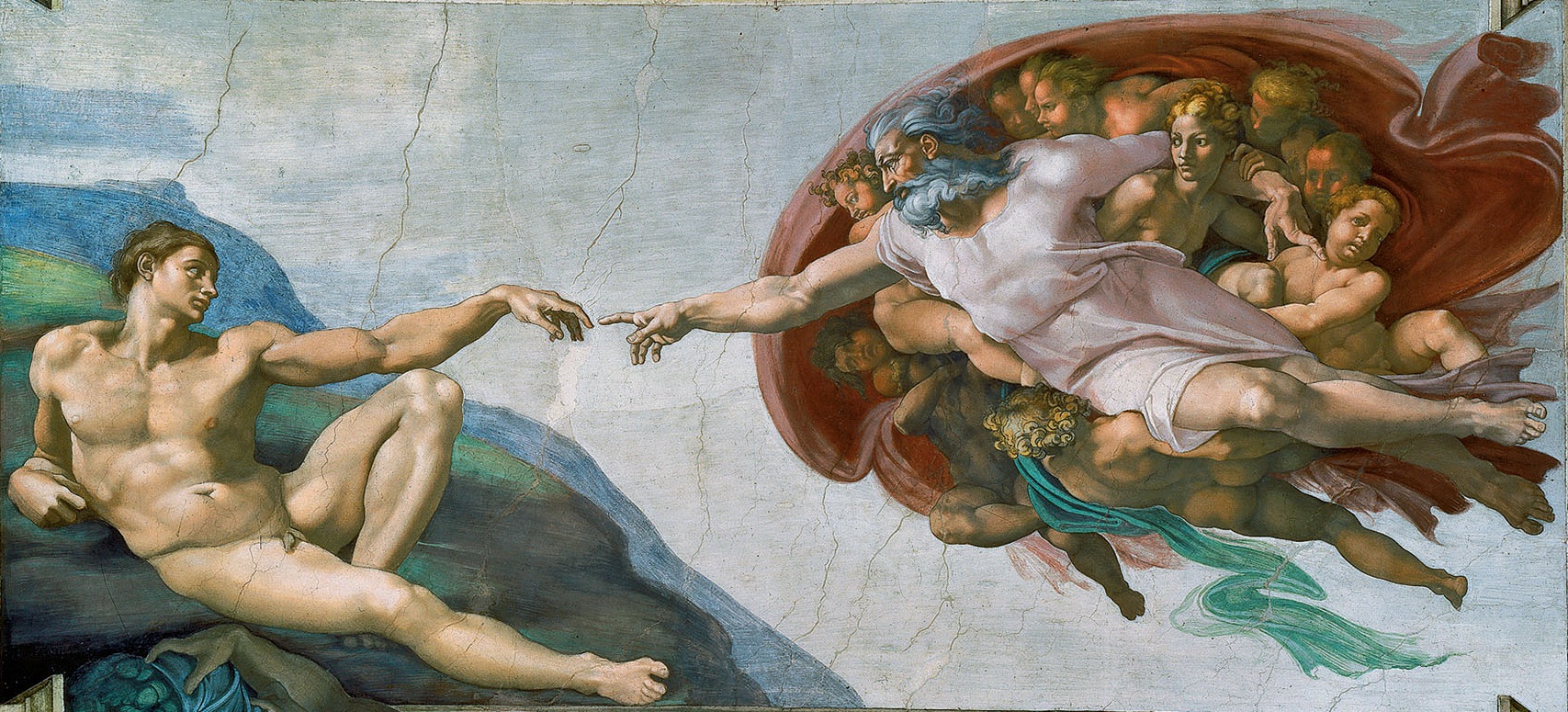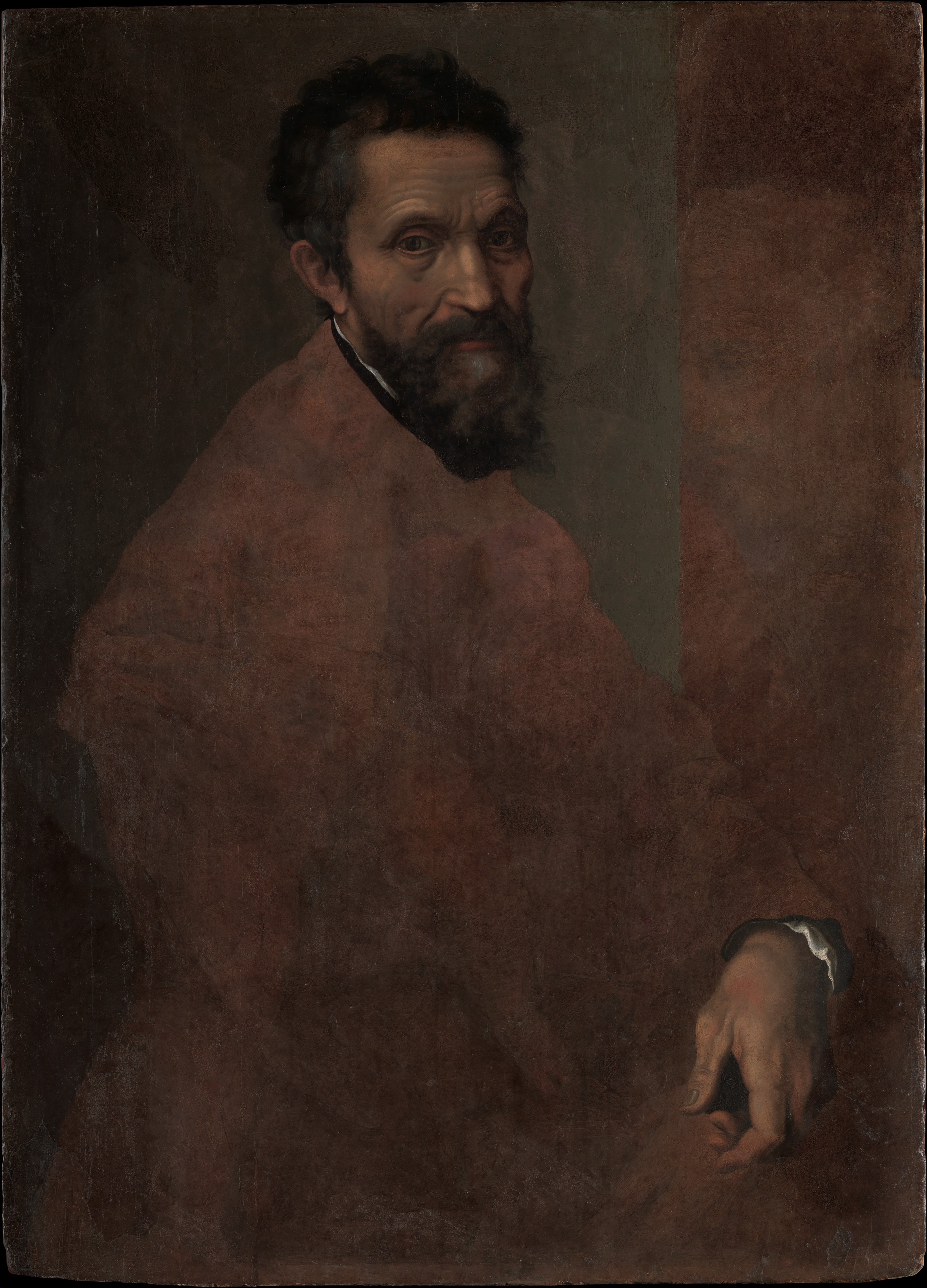This famous fresco illustrates the Biblical creation narrative from the Book of Genesis in which God breathes life into Adam, the first man. It is part of a complex iconographic scheme and is chronologically the fourth in the series of panels on the Sistine Chapel depicting episodes from Genesis. God is depicted as an elderly white-bearded man wrapped in a swirling cloak, while Adam is completely nude. God's right arm is outstretched to impart the spark of life into Adam, whose left arm is extended in a pose mirroring God's, a reminder that man is created in the image and likeness of God (Gen 1:26). Notice that Adam's finger and God's finger are not touching. God, the giver of life, is reaching out to Adam who has yet to receive it; they are not on "the same level," as would be two humans shaking hands, for instance. Many hypotheses have been formulated regarding the identity and meaning of the figures around God. The person protected by God's left arm might be Eve, due to the figure's feminine appearance and gaze towards Adam, but other scholars suggest it may be Virgin Mary, Sophia (the personified human soul), or an angel of feminine build. The Creation of Adam is generally thought to depict the verse, "God created man in his own image, in the image of God he created him" (Gen 1:27). Michelangelo's main source of inspiration for his Adam seems to have been a cameo showing a nude Augustus Caesar riding sidesaddle on a Capricorn, which at the time belonged to Cardinal Grimani, who was then in Rome. (This cameo is now at Alnwick Castle, Northumberland.) Evidence suggests that Michelangelo and Grimani were friends. Some scholars have been dissatisfied with the theory Michelangelo was mainly inspired by Lorenzo Ghiberti's Adam in his Creation of Adam. This cameo offers an alternative theory.




Creation of Adam
fresco • 280 cm × 570 cm
 Michelangelo
Michelangelo